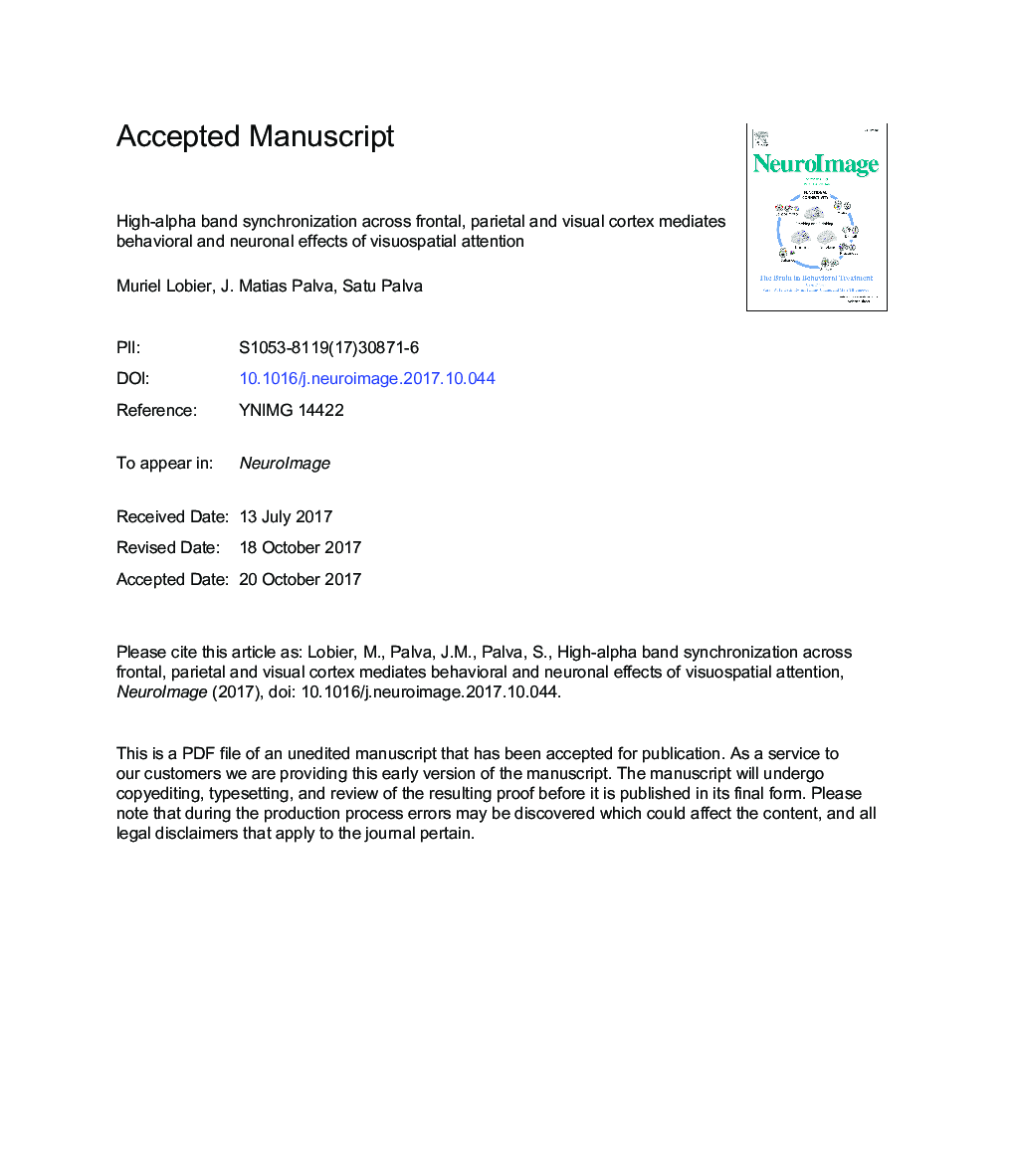| Article ID | Journal | Published Year | Pages | File Type |
|---|---|---|---|---|
| 8687398 | NeuroImage | 2018 | 54 Pages |
Abstract
Visuospatial attention prioritizes processing of attended visual stimuli. It is characterized by lateralized alpha-band (8-14Â Hz) amplitude suppression in visual cortex and increased neuronal activity in a network of frontal and parietal areas. It has remained unknown what mechanisms coordinate neuronal processing among frontoparietal network and visual cortices and implement the attention-related modulations of alpha-band amplitudes and behavior. We investigated whether large-scale network synchronization could be such a mechanism. We recorded human cortical activity with magnetoencephalography (MEG) during a visuospatial attention task. We then identified the frequencies and anatomical networks of inter-areal phase synchronization from source localized MEG data. We found that visuospatial attention is associated with robust and sustained long-range synchronization of cortical oscillations exclusively in the high-alpha (10-14Â Hz) frequency band. This synchronization connected frontal, parietal and visual regions and was observed concurrently with amplitude suppression of low-alpha (6-9Â Hz) band oscillations in visual cortex. Furthermore, stronger high-alpha phase synchronization was associated with decreased reaction times to attended stimuli and larger suppression of alpha-band amplitudes. These results thus show that high-alpha band phase synchronization is functionally significant and could coordinate the neuronal communication underlying the implementation of visuospatial attention.
Related Topics
Life Sciences
Neuroscience
Cognitive Neuroscience
Authors
Muriel Lobier, J. Matias Palva, Satu Palva,
